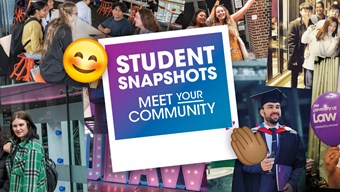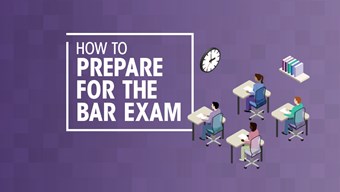Dr Sarah Mohammad-Qureshi joined us at The University of Law as Equality, Diversity and Inclusion (EDI) Partner, the next step in her inspiring career. We sat down with Sarah to discuss how she became a public advocate of diversity and how anyone can be an ally.
By Editorial Team. Published 8 March 2022. Last updated 31 May 2023.
Dr Sarah Mohammad-Qureshi joined us at The University of Law as Equality, Diversity and Inclusion (EDI) Partner, the next step in her inspiring career. We sat down with Sarah to discuss how she became a public advocate of diversity and how anyone can be an ally.
I am the Equality, Diversity and Inclusion (EDI) Partner at The University of Law. This is a very varied role, which is something I really enjoy. My day may consist of analysing and manipulating data, discussing EDI-related concerns and actions with students and colleagues, contributing to sector-wide discussions, reviewing, updating, and writing policies and guidance, and researching best practice.
Several worldwide events in 2020 brought EDI matters to the fore. Conversations, particularly around race and disability, were now being prioritised and systemic barriers were being uncovered. In the higher education sector, this has already led to actions to provide a structurally and culturally inclusive and accessible place of work and study. Keeping these conversations in the foreground enables us to build on what has been achieved already and ensure this progress is sustained.
Diversity essentially describes the world we live in, where each of us presents a unique identity of characteristics which may change over the course of our lives. Fairness and equity would then support a reflection of that diversity in places where we work, study, socialise etc. Exposing ourselves to a diverse environment means we benefit from innovation, diversity of thought, and increased understanding of the world.
I started my career as a scientist and learned very quickly that there was an issue with diverse gender representation in senior roles and an even more pronounced underrepresentation of particular ethnicities and disabilities. This is where I started my EDI journey. I couldn’t accept that this is just the way the sector is and wanted to actively improve access and progression opportunities. At my last university, I created a developmental programme for mid-career staff of underrepresented ethnicities which focused on supporting them to access profile-raising networks which had previously been inaccessible. I have helped shape the national charter for gender equality in higher education (Advance HE’s Athena Swan) through my role on the ‘Gender as a Spectrum’ specialist review subgroup. I am very keen to see more support in place for working parents, parents to be, and carers, a group who are often in roles which work around their caring roles rather than their capabilities and skills.
I think combating misinformation is the most challenging aspect of improving diversity. Much of what impedes diversity and inclusion are stereotypes and ‘othering’. The media have had a huge role in this, and we see it in the press, across social media etc. There is also misinformation spread across communities and across generations. University presents a great opportunity for people from all aspects of life to come together and learn first-hand about each other.
It is hugely important that everyone feels included in the workplace. Inclusion and belonging are the foundations of equity and there is no benefit to creating a diverse environment without valuing each person as their whole self. Not all diversity is visible – for example, gender reassignment, LGBTQ+ identities, socioeconomic background and invisible disabilities. It is not enough for us to be considerate and accommodating once we know which characteristics people present, the environment has to be inclusive by design.
Considering women were only allowed to practice law in 1919 – following the Sex Disqualification (Removal) Act – it is really positive that over 70% of our law students are women. However, if we look at the wider profession, we can see fewer women progress into senior roles. The representation of diverse ethnicities is also poor, with Black, Asian and other minority ethnicities representing 15% of barristers, 18% of solicitors and 14% of chartered legal executives (according to Diversity of the judiciary: Legal professions, new appointments and current post-holders – 2021). However, relative to the population they work in, this can impact the connections and cultural understandings with the communities they serve – for example, in the 2011 census, 40.2% of Londoners identified as an ethnicity other than White. Understanding cultural cues, practices, non-verbal gestures, language constraints etc. are valuable skills for anyone working in professions which involve the community we live in.
In business, there has been a shift towards recognising the value a diverse workforce brings, in terms of understanding the needs of a global market which is now more reachable. Expanding the customer base relies on understanding the needs of those customers and a diverse workforce enables this by providing authentically researched and designed services and products. There have been many infamous examples of where diversity and consulting with a diverse population would have improved organisations or prevented major flaws in product design and marketing.
I became a public advocate of diversity by sharing my experiences and learning. Unfortunately, like many others, there have been incidences I have directly experienced that I have never wanted to reveal. Receiving racist, Islamophobic and classist taunts or experiencing discrimination because of my gender or caring responsibilities was something I would keep to myself, believing that sharing this would cause further embarrassment or victim-blaming. The other thing about bullying, harassment and discrimination is that it has a hidden impact – the added burden of having to report, request support, and manage an additional workload to rectify a wrong which you have little control over. Once I had the privilege of holding a role which gave me the platform to share, I did. I’ve been involved in a variety of networks of EDI practitioners, higher education academics, national organisations, and charities. I’ve used that space to highlight the issues, relieve that burden off others, and help create spaces for effective reporting. Often, people are surprised by the experiences I share and that helps me see how much work there is to do.
Any student can support diversity through allyship – giving visible support to more marginalised peers. This goes beyond simply accepting people who are different to yourself, to the more active position of relieving their burden of having to fight for their fair treatment and inclusion. This can come in a variety of forms; educating yourself on cultures to create an inclusive environment, calling out friends making jokes which are homophobic, misogynistic etc., and attending events which help celebrate or teach about equality groups. Identify where you have the privilege of power and influence and use that to help amplify issues which are impacting those less privileged. Anyone can be an ally, even if you are from a different marginalised group yourself.
Discover more about equality, diversity and inclusion at the University of Law.



